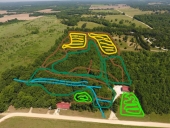
 1
1




 2
2




 1
1




"Study books and observe nature; if they do not agree, throw away the books." ~ William A. Albrecht
 1
1




 1
1




 1
1




Huxley Harter wrote:CYPRESS!!! I love cypresss It also is great for lumber. I would suggest visiting the nearest wild swamp. What state and zone are you?




John Wolfram wrote:Based on your other post, it looks like you're in Michigan. How swampy of a swamp are you talking about? Is this a full on mangrove, or just some place that floods from time to time?




 1
1




 1
1








Shawn Harper wrote:Does anyone in this situation know if willow works. Seems like a good fit.







 4
4




 1
1




Matt Dale wrote:It’s definitely a year round swamp. This is my first year here so I don’t know how high the water gets but we have had much more rain than normal this year, this past 2 weeks are the first weeks we have had of summer with no constant rain. And right now it’s a couple inches of water. I don’t know how to really answer how swampy it is.
 1
1




 3
3




 2
2





 1
1




 2
2




 3
3




When you reach your lowest point, you are open to the greatest change.
-Avatar Aang
 5
5




 3
3




Matt Dale wrote:So I have about 3 acres of swamp on my property right now most of it is open with no trees. Surrounded on the edges with thick brush. Right now there is about 1-2 inches of standing water or puddles of water with mainly grasses and weeds growing. Are there any trees that could tolerate those conditions? I would like to make it more useful and have trees growing there and have it be more of a wooded area that I could eventually use for firewood, and I would just prefer it to be a forest area rather than weeds.




 2
2




 1
1





|
Wanna see my flashlight? How about this tiny ad?
The new gardening playing cards kickstarter is now live!
https://www.kickstarter.com/projects/paulwheaton/garden-cards
|



